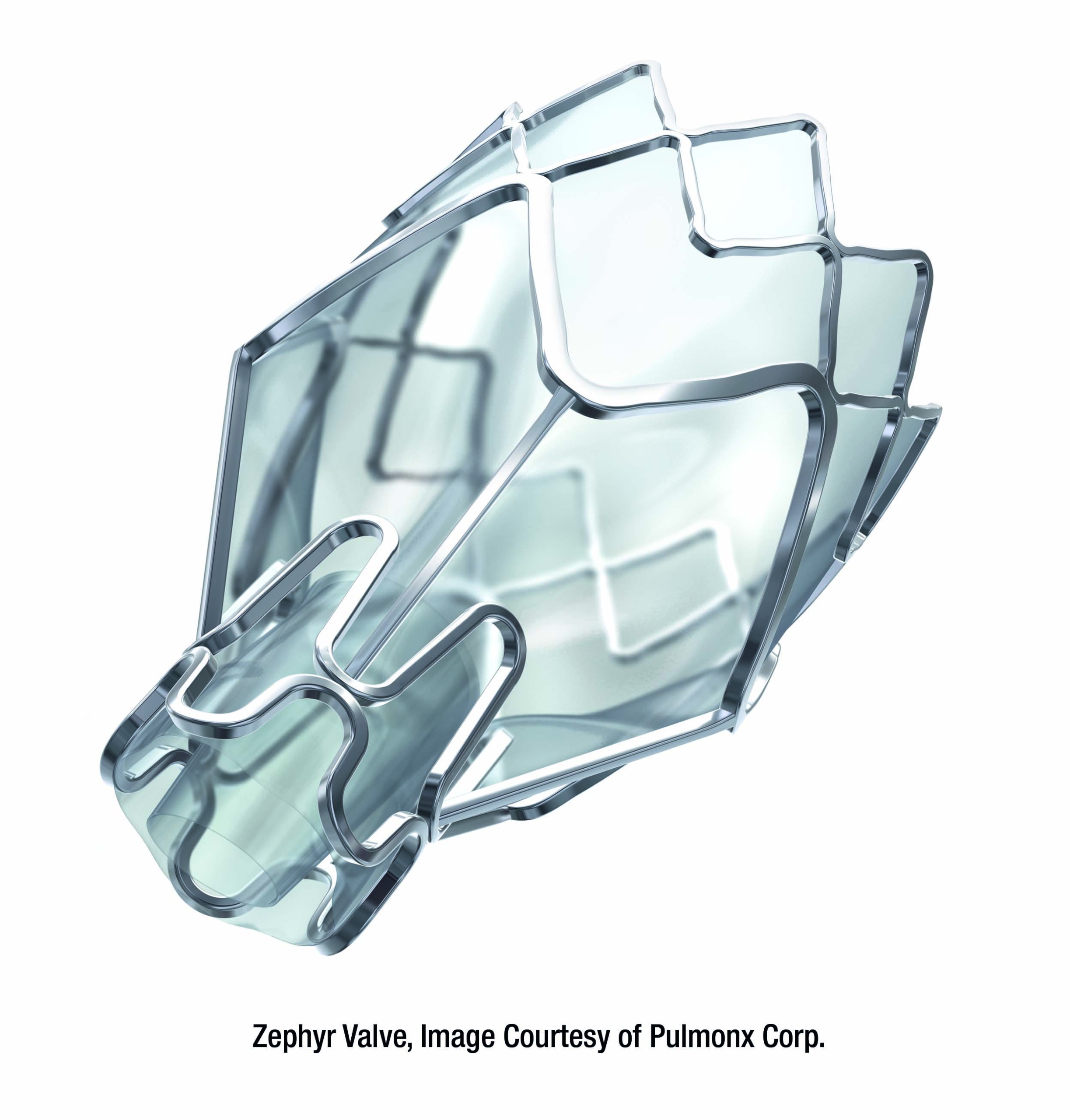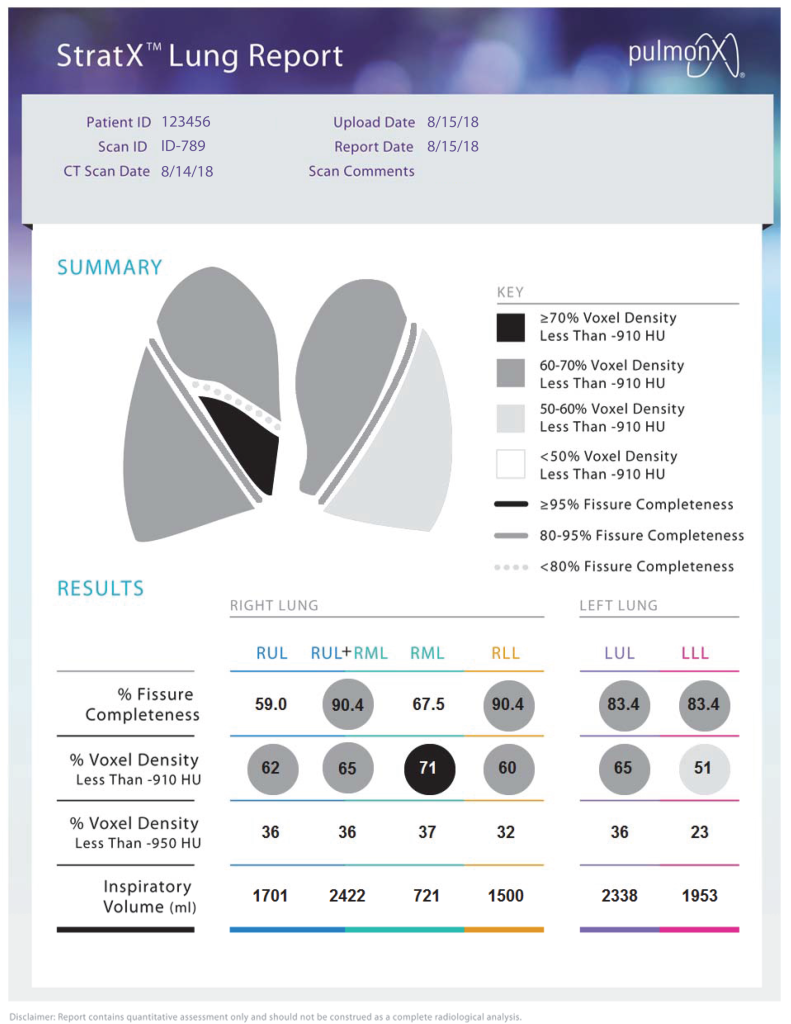Thirona and Pulmonx have extended their strategic partnership, which leverages Thirona’s AI-powered solutions in Pulmonx StratX® platform

Zephyr® Endobronchial Valve
Nijmegen, the Netherlands (May 15, 2022) - Thirona BV and Pulmonx Corporation (NASDAQ: LUNG) have extended their long-running strategic partnership, developing and commercializing solutions that help clinicians diagnose and treat emphysema patients through the Pulmonx StratX Lung Analysis Platform. StratX is a cloud-based quantitative CT analysis service that supports Zephyr® Endobronchial Valve patient selection and treatment targeting by providing information on emphysema destruction, fissure completeness, and lobar volumes. Zephyr® Endobronchial Valve treatment is the most studied endobronchial valve and is clinically proven to improve patients’ lung function, exercise capacity and quality of life1-3
The longstanding partnership has allowed Pulmonx to provide customers with StratX CT scan analysis that leverages both artificial intelligence and analyst review to inform treatment decisions for severe emphysema patients. Thirona’s LungQ™ artificial intelligence (AI) engine, performs automated analytics of clinical data from lung CT scans. The AI-based software enables precise identification and quantification of anatomical structures and disease-related abnormalities, in a multitude of lung and respiratory diseases. Thirona solutions have been validated in over 180 scientific publications and through analyzing more than 10 million imaging datasets.
“We believe that science should be used for the benefit of all people. LungQ is an ultimate demonstration of the value that artificial intelligence brings to precision medicine, allowing for much more effective and often lifesaving, personalized patient treatment. The partnership with Pulmonx is a great example of how our technology is enabling breakthroughs in treatment development and clinical care. We are very excited to continue working together,” says Eva van Rikxoort, founder and CEO of Thirona.

Pulmonx StratX quantitative CT analysis supports Zephyr® Endobronchial Valve patient selection and treatment targeting.
About Thirona
Thirona is an international company, based in The Netherlands, specializing in artificial intelligence for lung image analysis that allows for precise quantification of disease symptoms and contributes to personalized patient treatment. Thirona partners with research institutions and medical companies in their innovation trajectories to enable breakthroughs in treatment development and clinical care. Solutions developed support medical professionals in their daily tasks working with thoracic CT-scans (LungQ), chest X-rays (CAD4TB) and retinal scans (RetCAD). Founded in 2014 by female scientist Eva van Rikxoort, the company develops highly innovative deep learning solutions for lung and retinal image analysis. Rooted in science and providing reliable and user-friendly solutions, it bridges the gap between academic ideas and clinical use. Since inception in 2014, Thirona has become an important player in the medical imaging field. Solutions developed by Thirona are installed in 45 countries all over the world, enabling medical specialists to provide personalized treatment for common and rare lung diseases, ultimately helping more patients faster.
More information: thirona.eu
Media contact: mediarelations@thirona.eu
Pulmonx®, StratX®, and Zephyr® are registered trademarks of Pulmonx Corporation.
References:
- Criner, GJ, Sue, R, Wright, S, Dransfield, M, Rivas-Perez, H, Wiese, T & Morrissey, B. A multicenter randomized control trial of Zephyr endobronchial valve treatment in heterogeneous emphysema (LIBERATE). Am J Respir Crit Care Med, 2018;198(9), 1151-1164, and data on file at Pulmonx.
- Kemp, SV, Slebos, DJ, Kirk, A, Kornaszewska, M, Carron, K, Ek, L & Briault, A. A multicenter randomized controlled trial of Zephyr endobronchial valve treatment in heterogeneous emphysema (TRANSFORM). Am J Respir Crit Care Med, 2017;196(12), 1535-1543.
- Valipour, A, Slebos, DJ, Herth, F, Darwiche, K, Wagner, M, Ficker, JH, & Eberhardt, R. Endobronchial valve therapy in patients with homogeneous emphysema. Results from the IMPACT study. Am J Respir Crit Care Med, 2016;194(9), 1073-1082, and data on file at Pulmonx.